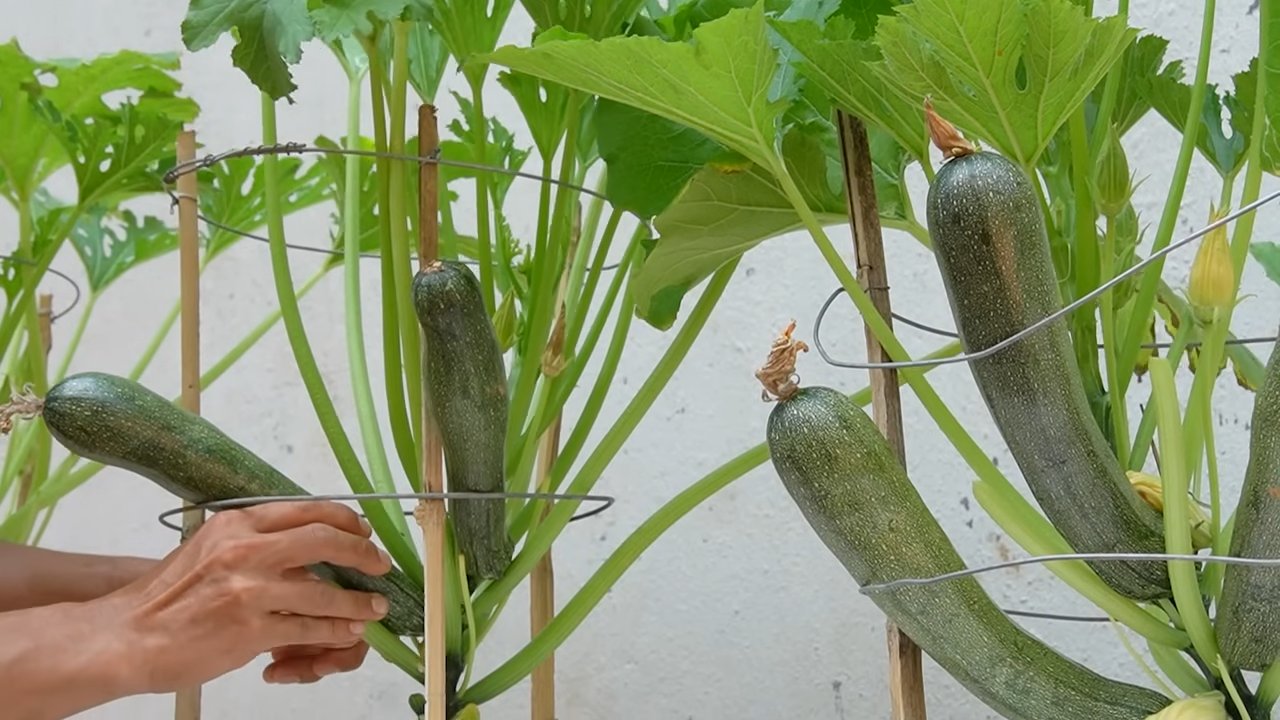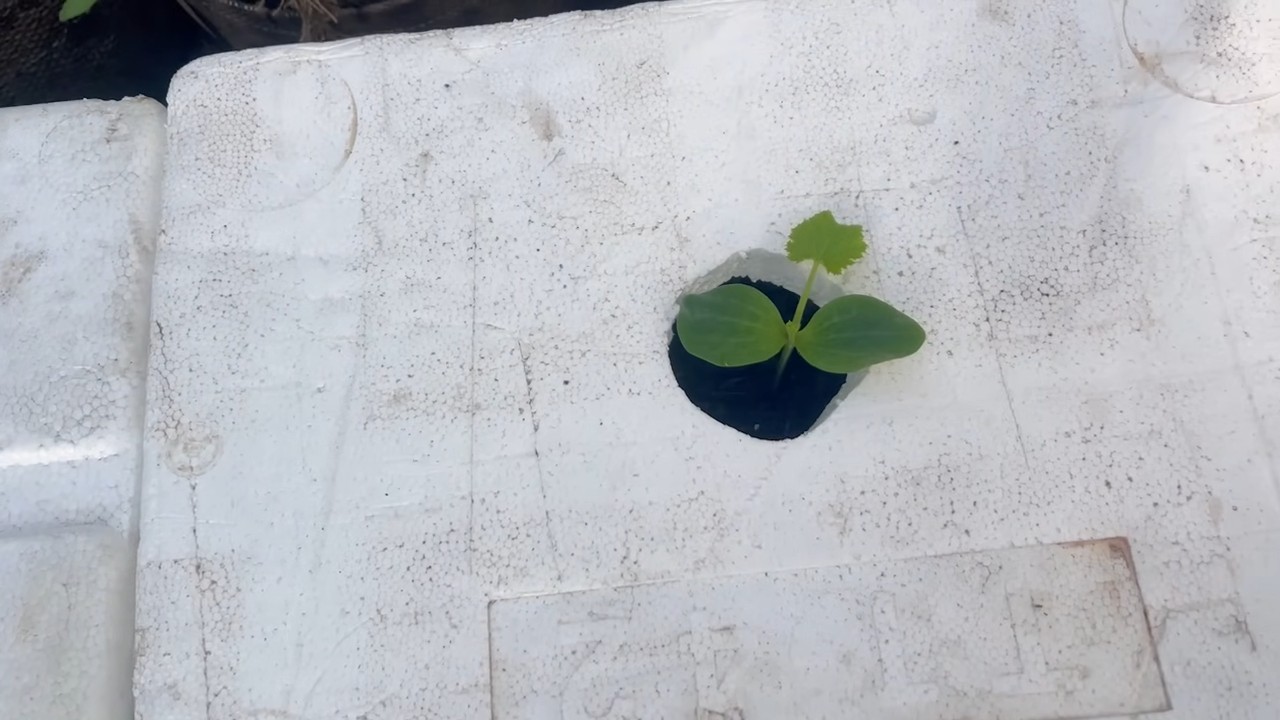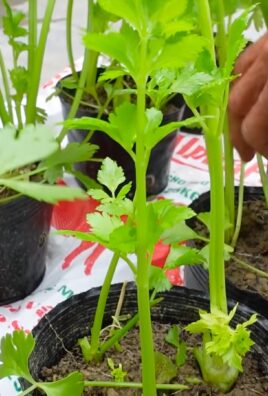Zucchini Growing Secrets: Unlock the bountiful harvest you’ve always dreamed of! Have you ever envisioned a garden overflowing with vibrant, green zucchini, ready to be transformed into delicious dishes? I know I have! But sometimes, despite our best efforts, those zucchinis remain stubbornly small or, worse, succumb to pests and diseases. That’s where these DIY tricks come in – they’re your secret weapon to zucchini success!
For centuries, zucchini, a member of the squash family, has been a staple in cuisines around the world. Originating in the Americas, it quickly spread to Europe and beyond, becoming a beloved ingredient in everything from ratatouille to zucchini bread. But even with its long history, mastering zucchini cultivation can still be a challenge.
Let’s face it, nobody wants to spend time and energy on a garden that yields disappointing results. That’s why I’m sharing these simple yet effective Zucchini Growing Secrets. These DIY hacks will help you optimize your soil, protect your plants from common problems, and ultimately, enjoy a more abundant and flavorful zucchini harvest. Get ready to transform your garden and impress your friends and family with your zucchini-growing prowess!

Unlock Zucchini Abundance: My Foolproof DIY Growing Guide
Hey fellow gardeners! I’m so excited to share my secrets to growing zucchini that are so prolific, you’ll be giving them away to everyone you know (and still have plenty for yourself!). Forget those tiny, sad zucchinis – we’re going for giants! This guide is packed with tips and tricks I’ve learned over the years, and I promise, even if you’re a beginner, you can achieve zucchini success.
Choosing the Right Variety
Before we even think about planting, let’s talk varieties. Not all zucchinis are created equal! Some are more disease-resistant, some are bushier, and some just taste better. Here are a few of my favorites:
* Black Beauty: A classic for a reason! Reliable, dark green, and produces tons of fruit.
* Costata Romanesco: This Italian heirloom has a slightly nutty flavor and beautiful ribbed skin. It’s also a bit more compact than some other varieties.
* Golden Zucchini: Adds a pop of color to your garden and your plate! The flavor is similar to green zucchini.
* Eight Ball: If you’re short on space, this round zucchini is perfect. It’s also great for stuffing!
Preparing Your Zucchini Paradise
Zucchini plants are hungry, hungry hippos when it comes to nutrients, so soil preparation is key. Think of it as building them a luxurious mansion to live in!
* Sunlight: Zucchini needs at least 6-8 hours of direct sunlight per day. Choose a spot in your garden that gets plenty of sunshine.
* Soil: Well-draining soil is crucial. Zucchini hates sitting in soggy soil. Amend your soil with plenty of compost or well-rotted manure. This will improve drainage and add essential nutrients.
* pH: Zucchini prefers a soil pH between 6.0 and 7.5. You can test your soil pH with a simple soil testing kit from your local garden center. If your soil is too acidic, add lime to raise the pH. If it’s too alkaline, add sulfur to lower the pH.
* Space: Zucchini plants get BIG. Give them plenty of room to spread out. I recommend spacing plants at least 2-3 feet apart. If you’re growing in rows, space the rows 3-4 feet apart.
Planting Your Zucchini Seeds or Seedlings
Now for the fun part – getting those zucchini plants in the ground!
* Timing: Zucchini is a warm-weather crop, so wait until after the last frost to plant. The soil temperature should be at least 60°F (16°C). You can start seeds indoors 3-4 weeks before the last frost, but zucchini doesn’t always transplant well, so I usually prefer to direct sow.
* Direct Sowing: Sow seeds about 1 inch deep and 2-3 feet apart. Water gently but thoroughly.
* Transplanting Seedlings: If you started seeds indoors, harden them off for a week before transplanting. This means gradually exposing them to outdoor conditions. Dig a hole slightly larger than the root ball, gently remove the seedling from its container, and plant it in the hole. Water well.
Nurturing Your Zucchini Plants: The Secret Sauce
This is where the magic happens! Consistent care is essential for a bountiful harvest.
* Watering: Zucchini needs consistent moisture, especially during hot weather. Water deeply at the base of the plant, avoiding getting the leaves wet. Aim for about 1 inch of water per week. Mulching around the plants will help retain moisture and suppress weeds.
* Fertilizing: Zucchini is a heavy feeder, so regular fertilization is important. I like to use a balanced organic fertilizer every 2-3 weeks. You can also side-dress with compost or well-rotted manure.
* Pollination: Zucchini plants have separate male and female flowers. The female flowers have a small zucchini fruit at the base, while the male flowers don’t. Bees are essential for pollination. If you’re not seeing many bees in your garden, you can hand-pollinate the flowers. To do this, simply take a male flower, remove the petals, and gently rub the pollen onto the stigma of a female flower.
* Pest Control: Zucchini plants can be susceptible to pests like squash bugs, squash vine borers, and aphids. Inspect your plants regularly for signs of pests. You can use insecticidal soap or neem oil to control these pests. Row covers can also help prevent pests from reaching your plants.
* Disease Prevention: Powdery mildew is a common problem with zucchini plants. To prevent powdery mildew, make sure your plants have good air circulation and avoid getting the leaves wet when watering. You can also spray your plants with a fungicide if necessary.
Harvesting Your Zucchini Bounty
The moment we’ve all been waiting for!
* Timing: Harvest zucchini when it’s young and tender, usually when it’s about 6-8 inches long. Overripe zucchini can be tough and seedy.
* Technique: Use a sharp knife to cut the zucchini from the plant, leaving a short stem attached.
* Frequency: Check your plants every day or two during peak season. Zucchini grows incredibly fast!
Troubleshooting Common Zucchini Problems
Even with the best care, you might encounter some problems along the way. Here are a few common issues and how to fix them:
* Blossom End Rot: This is caused by a calcium deficiency. Make sure your soil has enough calcium and water consistently.
* Yellowing Leaves: This could be a sign of nutrient deficiency, pest infestation, or disease. Check your plants carefully and address the underlying cause.
* No Fruit Production: This could be due to poor pollination, lack of sunlight, or nutrient deficiency. Make sure your plants are getting enough sunlight, water, and nutrients, and consider hand-pollinating the flowers.
* Squash Vine Borers: These pests can tunnel into the stems of your zucchini plants and kill them. Look for small holes in the stems and sawdust-like frass. You can try to remove the borers manually or use an insecticide.
My Top Zucchini Growing Secrets: Pro Tips!
Okay, now for the really good stuff! These are the tips and tricks I’ve learned over the years that have made a HUGE difference in my zucchini harvests.
* Companion Planting: Plant zucchini with companion plants like marigolds, nasturtiums, and basil. These plants can help repel pests and attract pollinators.
* Succession Planting: Plant zucchini seeds every 2-3 weeks for a continuous harvest throughout the summer.
* Water deeply and infrequently: Encourage deep root growth by watering thoroughly but less often. This makes the plants more drought-tolerant.
* Mulch, mulch, mulch!: A thick layer of mulch will help retain moisture, suppress weeds, and regulate soil temperature.
* Don’t be afraid to prune: Remove any yellowing or damaged leaves to improve air circulation and prevent disease.
* Harvest regularly: The more you harvest, the more the plant will produce!
* Compost, compost, compost!: I can’t stress this enough. Compost is the key to healthy soil and happy zucchini plants.
* Give them space: Zucchini plants need room to breathe. Don’t overcrowd them.
* Observe your plants: Pay attention to your plants and learn their needs. The more you observe, the better you’ll become at growing zucchini.
* Don’t give up!: Gardening is a learning process. Don’t be discouraged if you have some failures along the way. Just keep learning and experimenting, and you’ll eventually find what works best for you.
Step-by-Step Guide: From Seed to Zucchini Feast!
Let’s break it down into a simple, easy-to-follow guide:
1. Choose your zucchini variety: Select a variety that suits your climate and preferences.
2. Prepare your soil: Amend your soil with plenty of compost or well-rotted manure. Ensure good drainage.
3. Plant your seeds or seedlings: Direct sow seeds after the last frost or transplant seedlings that have been hardened off.
4. Water consistently: Water deeply at the base of the plant, avoiding getting the leaves wet.
5. Fertilize regularly: Use a balanced organic fertilizer every 2-3 weeks.
6. Monitor for pests and diseases: Inspect your plants regularly and take action if you see any problems.
7. Pollinate if necessary: Hand-pollinate the flowers if you’re not seeing many bees.
8. Harvest frequently: Harvest zucchini when it’s young and tender, about 6-8 inches long.
9. Enjoy your zucchini bounty!: Get creative with your zucchini and try new recipes.

Conclusion
So, there you have it! Unlocking the secrets to abundant zucchini harvests isn’t about complicated techniques or expensive equipment. It’s about understanding the plant’s needs and employing a few clever, DIY tricks that can make all the difference. From hand-pollinating for guaranteed fruit set to companion planting for pest control and nutrient optimization, these methods are accessible to gardeners of all skill levels.
Why is this a must-try? Because it empowers you to take control of your zucchini production. No more relying solely on chance pollination or battling relentless squash vine borers with harsh chemicals. You’ll be rewarded with a healthier, more productive garden and a bounty of delicious zucchini to enjoy in countless ways. Imagine the satisfaction of serving up zucchini bread made with vegetables you nurtured from seed to table, or grilling up perfectly tender zucchini slices knowing you played a direct role in their success.
Don’t be afraid to experiment! Consider these variations to tailor the techniques to your specific garden conditions and preferences:
* Vertical Zucchini Growing: If space is limited, try training your zucchini plants to grow vertically on a trellis or support system. This improves air circulation, reduces the risk of fungal diseases, and makes harvesting easier.
* Zucchini Mulch Magic: Use shredded zucchini leaves and stems as mulch around your plants. As they decompose, they’ll release valuable nutrients back into the soil, creating a self-sustaining cycle of nourishment.
* Compost Tea Boost: Brew a compost tea using aged compost and water, and use it to fertilize your zucchini plants every few weeks. This provides a gentle, organic boost of essential nutrients.
* Seed Saving for the Future: Save seeds from your most productive zucchini plants to ensure a consistent supply of high-quality seeds for future growing seasons.
Ultimately, the best way to discover the full potential of these DIY zucchini growing secrets is to put them into practice. Start small, observe your plants carefully, and adjust your approach as needed. The journey of gardening is one of continuous learning and experimentation, and the rewards are well worth the effort.
We are confident that these tips will significantly improve your zucchini growing experience. Now, we encourage you to get your hands dirty, try these techniques, and share your results with us! We’d love to hear about your successes, challenges, and any variations you discover along the way. Post your photos and stories on our social media channels using #ZucchiniSecrets or leave a comment below. Let’s build a community of thriving zucchini gardeners! Remember, mastering these **zucchini growing secrets** is the key to a truly bountiful harvest.
Frequently Asked Questions (FAQ)
Q: I’ve tried growing zucchini before, but I always end up with only a few fruits. What am I doing wrong?
A: There could be several factors contributing to low zucchini yields. The most common culprits are poor pollination, nutrient deficiencies, and pest infestations. Insufficient pollination can be addressed by hand-pollinating the female flowers, especially during periods of low bee activity. Ensure your soil is rich in organic matter and consider supplementing with a balanced fertilizer. Regularly inspect your plants for pests like squash vine borers and squash bugs, and take appropriate action to control them. Also, make sure your zucchini plants are getting at least 6-8 hours of direct sunlight per day.
Q: How do I know when a zucchini is ready to harvest?
A: Zucchini are best harvested when they are young and tender, typically around 6-8 inches in length. The skin should be smooth and glossy, and the flesh should be firm. Use a sharp knife or pruning shears to cut the zucchini from the plant, leaving a short stem attached. Overripe zucchini can become tough and seedy, so it’s best to harvest them regularly to encourage continued production.
Q: What are the best companion plants for zucchini?
A: Companion planting can be a great way to improve zucchini growth and deter pests. Some excellent companion plants for zucchini include:
* Marigolds: Repel nematodes and other soil pests.
* Nasturtiums: Attract aphids away from zucchini plants.
* Radishes: Deter squash vine borers.
* Beans: Fix nitrogen in the soil, benefiting zucchini plants.
* Oregano: Acts as a general pest repellent.
Avoid planting zucchini near potatoes, as they can compete for nutrients.
Q: My zucchini plants are getting powdery mildew. How can I prevent or treat it?
A: Powdery mildew is a common fungal disease that affects zucchini plants, especially in humid conditions. To prevent powdery mildew, ensure good air circulation around your plants by spacing them properly and pruning away any overcrowded leaves. Water at the base of the plants to avoid wetting the foliage. If powdery mildew does appear, you can treat it with a homemade solution of baking soda and water (1 teaspoon of baking soda per quart of water) or a commercially available fungicide. Neem oil can also be effective.
Q: How often should I water my zucchini plants?
A: Zucchini plants need consistent moisture, especially during hot, dry weather. Water deeply and regularly, aiming for about 1 inch of water per week. Check the soil moisture regularly and water when the top inch feels dry to the touch. Avoid overwatering, as this can lead to root rot. Mulching around the plants can help retain moisture and reduce the need for frequent watering.
Q: Can I grow zucchini in containers?
A: Yes, you can grow zucchini in containers, but you’ll need to choose a large container (at least 24 inches in diameter) to accommodate the plant’s size and root system. Use a high-quality potting mix and ensure the container has good drainage. Container-grown zucchini plants may require more frequent watering and fertilization than those grown in the ground. Choose bush varieties of zucchini for container growing, as they tend to be more compact.
Q: How do I deal with squash vine borers?
A: Squash vine borers are a common pest that can devastate zucchini plants. The larvae bore into the stems and feed on the plant’s tissues, causing it to wilt and die. To prevent squash vine borers, you can wrap the base of the stems with aluminum foil or pantyhose to prevent the moths from laying their eggs. You can also use row covers to protect the plants. If you see signs of squash vine borers (small holes in the stems, sawdust-like frass), you can try to remove the larvae by slitting the stem open and extracting them.
Q: What kind of fertilizer should I use for zucchini plants?
A: Zucchini plants benefit from a balanced fertilizer that is rich in nitrogen, phosphorus, and potassium. You can use a commercially available fertilizer or a homemade compost tea. Apply fertilizer every few weeks, following the instructions on the product label. Avoid over-fertilizing, as this can lead to excessive foliage growth and reduced fruit production.
Q: My zucchini flowers are falling off without producing fruit. Why?
A: This is often due to a lack of pollination. Zucchini plants have separate male and female flowers, and the pollen from the male flowers must be transferred to the female flowers for fruit to develop. If there are not enough pollinators in your area, you can hand-pollinate the flowers yourself. Simply use a small brush or cotton swab to transfer pollen from the male flowers to the female flowers. The female flowers have a small zucchini fruit at the base of the flower.
Q: Can I eat zucchini blossoms?
A: Yes, zucchini blossoms are edible and delicious! They can be stuffed, fried, or added to salads and soups. Harvest the male blossoms, as the female blossoms are needed for fruit production. Pick the blossoms in the morning, when they are fresh and open.




Leave a Comment